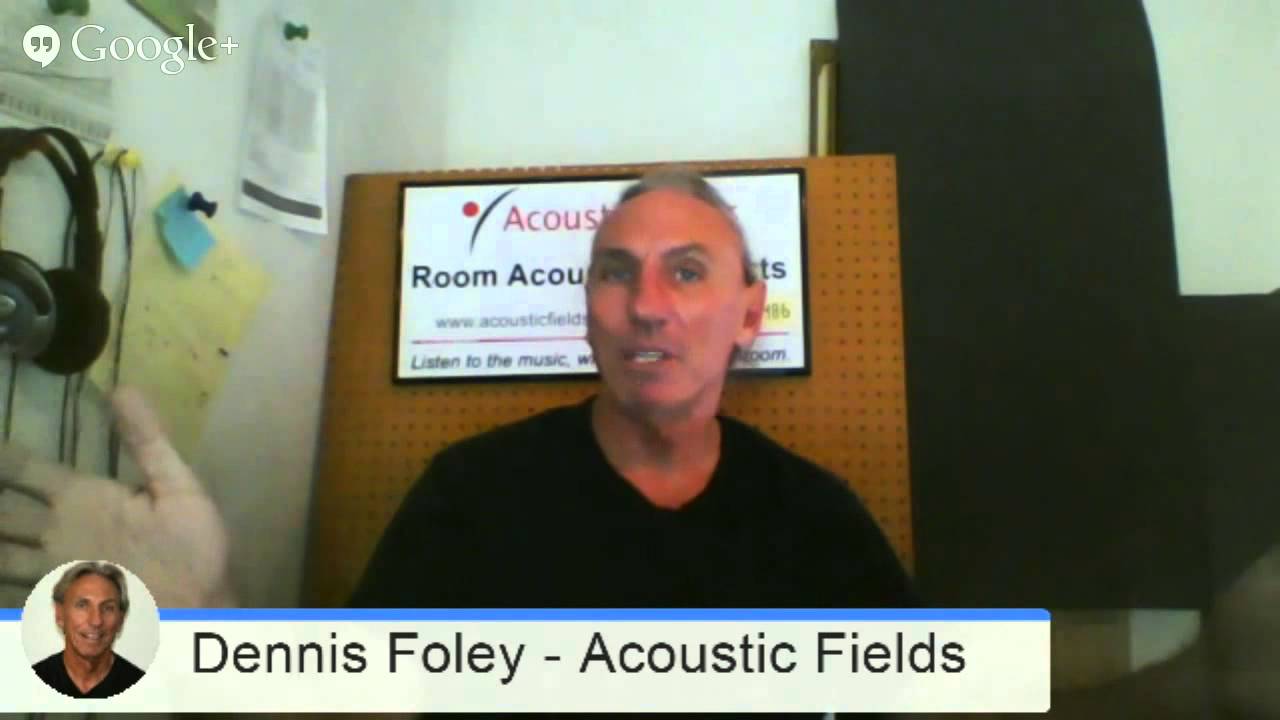In last weeks Google Hangout David asked the following question “Comparatively your room acoustic treatment is more expensive than others, how come?” Well two reasons, it’s prettier and it performs better and we’ve learned a good lesson as we’ve been moving through this year. This year’s really is our first year in the consumer marketplace and what we’ve learned is that I always thought that pretty, making it nice-looking was a good goal acoustically and in some rooms it is but in most it’s not people are really mainly concerned about performance.
So we have all kinds of price points and to suit all kinds of budgets. We’re not so expensive that you can’t afford us unless you need four or five of our production units as they’re very expensive and I understand that but they’re pieces of furniture. I mean they’re a furniture grade quality finish. You can set them right next to your speaker and most speakers have beautiful finishes and they’ll just look just like your speakers.
In fact a lot of times the finish on our units when they set next to speakers the customer calls me and says your product is finished better. I take that as a very serious compliment because speaker manufacturers are all about pretty. I would guess half the marketing they spend money on is telling you how pretty it is. The other half on how well it works.
Our units are expensive because they perform.
Also our units and the technology behind them was developed because I was frustrated as you are out there. You were buying products from companies that told you that “these are bass traps” and you put them in your room and then you found you still had the bass issue and you’d spent all that money on a solution that didn’t work.
Well that’s why I came up with the carbon technology because I bought the units that you guys have bought out there and I was unhappy. Our foam technology, I bought hundreds of thousands of square feet of Sonex and Auralex and put it in rooms. I can’t tell you how many rooms I put it in because it was so many. I remember one build during our research and development stage that just on Auralex and Sonex we spent almost 20 grand. I remember that that number because I didn’t like it, I didn’t like the curves, I didn’t like the sound and it was consistent, it was predictable but it wasn’t natural, it wasn’t natural voice.
R&D spend is critical
I didn’t really care about music in the beginning of the R&D process as it was mostly a voice product but it turns out it works wonderfully for music, way better than expected because we didn’t really have any expectations. All of our technology has come about as a direct result of my dissatisfaction which I’m sure is similar to yours and our products need to be a little bit more expensive because they work really a lot better than anything out there and our next series of products will even be better.
We have a whole series of carbon technologies that I would love to introduce to you all out there and finding the time to finish the R&D is hard. I think I have 21 products right now that all have carbon in them and work equally as well as the low-frequency series on sale now. So I’ve got to find the time and get back into the lab and get those out there.
I’m testing right now activated carbon for middle and high-frequency absorption and the absorption curves I’m getting back from test laboratories are better than our foam which is already great. I don’t know of anybody that has the absorption curves of our foam. Lots of great things happening in the future, great technology but I just have to find the time to get back in the lab and build a few for you all but we’ll work on that next year.








The discussion on ductwork noise transmission from Acoustic Fields highlights crucial aspects of HVAC system acoustics. The movement of air…
Great build plans. thank you Denis
You must use absorption. Never place a chair against a wall.
A friend and I built several diffusors using these plans and they turned out absolutely beautiful. Very good instructions and…